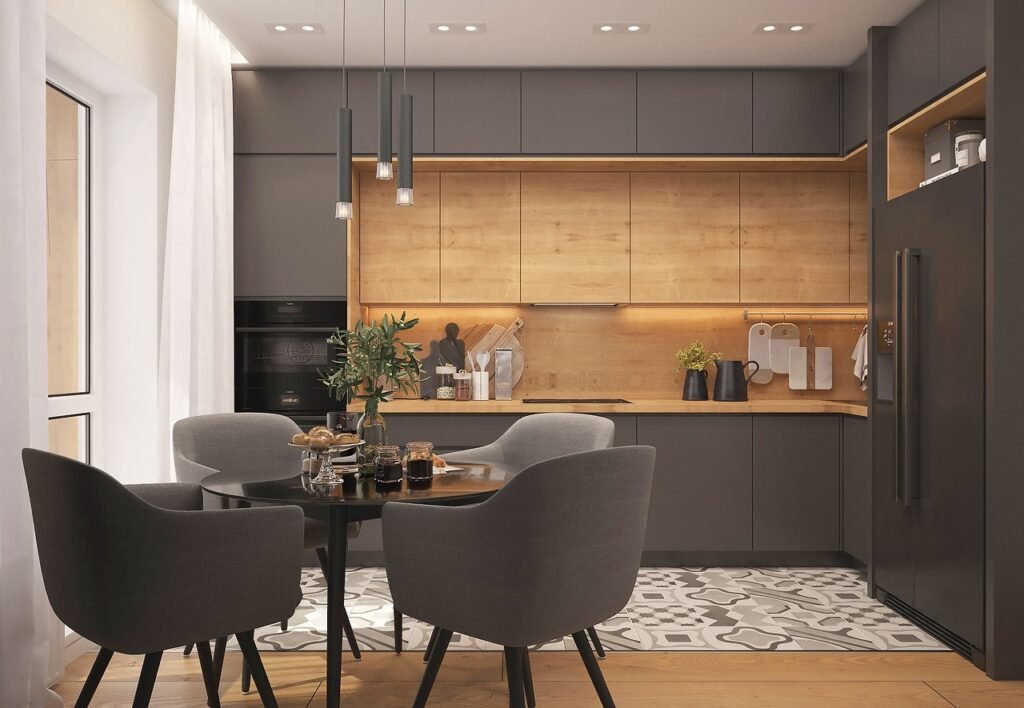Color Coordination: Matching Furniture With Your Interior Decor
When it comes to interior design, color coordination plays a pivotal role in creating a cohesive and harmonious space. The right combination of colors can enhance the aesthetics of your home, evoke certain emotions, and even influence the perception of space. Here’s a guide to help you match your furniture with your interior decor for a stunning and balanced look.

Understanding Color Theory
Before diving into color coordination, it’s essential to grasp the basics of color theory. Colors can be categorized into three main groups:
- Primary Colors: Red, blue, and yellow.
- Secondary Colors: Green, orange, and purple (created by mixing primary colors).
- Tertiary Colors: A mix of primary and secondary colors.
In addition to these, colors can be classified as warm (reds, oranges, yellows) or cool (blues, greens, purples). Understanding these classifications will help you select furniture that complements your overall decor.
Establishing a Color Palette
Creating a color palette is the first step in coordinating your furniture with your interior decor. Here’s how to establish one:
Choose a Base Color: This is the dominant color in your room, often found on walls or large furniture pieces. Neutral shades like white, beige, or gray work well as they provide a versatile backdrop.
Select Accent Colors: These colors add depth and interest. Choose one or two accent colors that will be used in smaller furniture pieces, decor items, and textiles.
Consider a Contrasting Color: A contrasting color can create visual interest and highlight certain areas of your space. Use it sparingly for maximum impact.
Matching Furniture with Decor
Once you have your color palette, it’s time to select furniture that complements it. Here are some tips:
Neutral Furniture: If your walls are bold or vibrant, opt for neutral-colored furniture. This allows the walls to stand out while providing a balanced and elegant look.
Color-Matched Pieces: For a more uniform appearance, choose furniture that matches one of your accent colors. For example, if your palette includes navy blue and soft gray, a navy sofa can tie the room together.
Mixing Textures: Different textures can add dimension to your space. Consider pairing a sleek leather sofa with a plush fabric armchair in a complementary color.
Use Patterns Wisely: If your furniture is patterned, ensure that it doesn’t clash with other patterns in the room. Use solid colors for surrounding decor to create a visual balance.
Room-Specific Considerations
Different rooms have different needs when it comes to color coordination:
Living Room: This space is often the heart of the home. Opt for furniture that invites relaxation and conversation. A neutral sofa paired with colorful accent chairs or cushions can create a lively atmosphere.
Bedroom: Aim for a serene and calming palette. Soft pastels or muted tones work well. Choose furniture that complements these colors while providing comfort and functionality.
Dining Room: Create an inviting space for meals with rich, warm colors. Dark woods and jewel tones can create an elegant dining atmosphere.
Home Office: For a productive workspace, consider colors that inspire focus. Soft blues and greens can be calming, while brighter colors can energize the space.
Conclusion
Color coordination is a vital aspect of interior design that can dramatically impact the feel of your home. By understanding color theory, establishing a cohesive palette, and thoughtfully selecting furniture, you can create a beautiful and harmonious space. Remember, the key is to maintain balance while allowing your personal style to shine through. Happy decorating!
